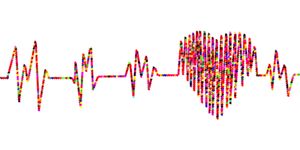New Technology Meets Old Medicine
Today, in healthcare if a patient has pain or some other problem, one of the diagnostic tools is a CT scan. These scans can show bone, tissue, tumors, disease and other abnormalities. They are a boon to medical science because more medical problems can be seen and diagnosed, sometimes even before symptoms have started.
This was not the case in ancient Egypt of course. While the Egyptians valued cleanliness and knew that caring for the sick meant extra measures were taken to keep wounds clean, they didn’t understand disease. If someone had a broken arm, they would attend to that, but when someone was ill, more often than not the attributed the cause to an angry ghost or some demonic spell that had been cast. Remedies involved prayer, incantations, offerings to the gods and amulets with oils and spices to be worn by the sick.
Recently, the old ways and the new were combined in a study of a mummy called The Cazenovia Mummy. It was purchased in Egypt in 1894 and brought back to central New York state, where it was kept in the Cazenovia Public Library. Initial exams said the mummy was a female, but that was eventually proven wrong, it’s a male. In looking at some of the documents that came with the mummy, researchers discovered part of his name was “Hen.”
Hen was examined by researchers at Crouse Hospital in Syracuse, NY in 2006, but at that time CT technology was not as advanced as it is now. CT scans can form images because they have rows of “detector arrays” that pick up details. In 2006, the scanner that Hen went through had 16 rows of detector arrays, which was the best available at the time. When Hen was scanned again a few weeks ago, also at Crouse Hospital, the machine used had 320 rows of detector arrays. Finally, researchers were able to make a diagnosis of a tumor that had been seen on Hen’s tibia in the first scan.
Not enough detail was present in 2006, but in the recent scan, doctors were able to determine that the tumor was bone cancer, most likely malignant. They don’t know yet if this mass was the cause of Hen’s death, but they will be doing more research to find out about any other health problems that might have been present. The work is a perfect combination of an ancient practice, mummification, preserving tissue and bone well enough that modern technology can diagnose what would never have been uncovered while Hen was alive. In the video, Dr. Mark Levinsohn of Crouse Hospital points out the leg area, saying, “He had a tumor on his Fibula which is one of the two bones of the lower leg. Looking at it, it had all the characteristics of a malignant tumor and one that’s somewhat rare. So, here we have a rare circumstance and a rare tumor, and that evoked our interest a lot.”
The hospital hopes to keep looking at Hen with different imaging tools to see if there is anything else they can find. Check out how the scan went in the video below.
Sources: Boy Genius Report, Newsweek, Ancient History Encyclopedia









